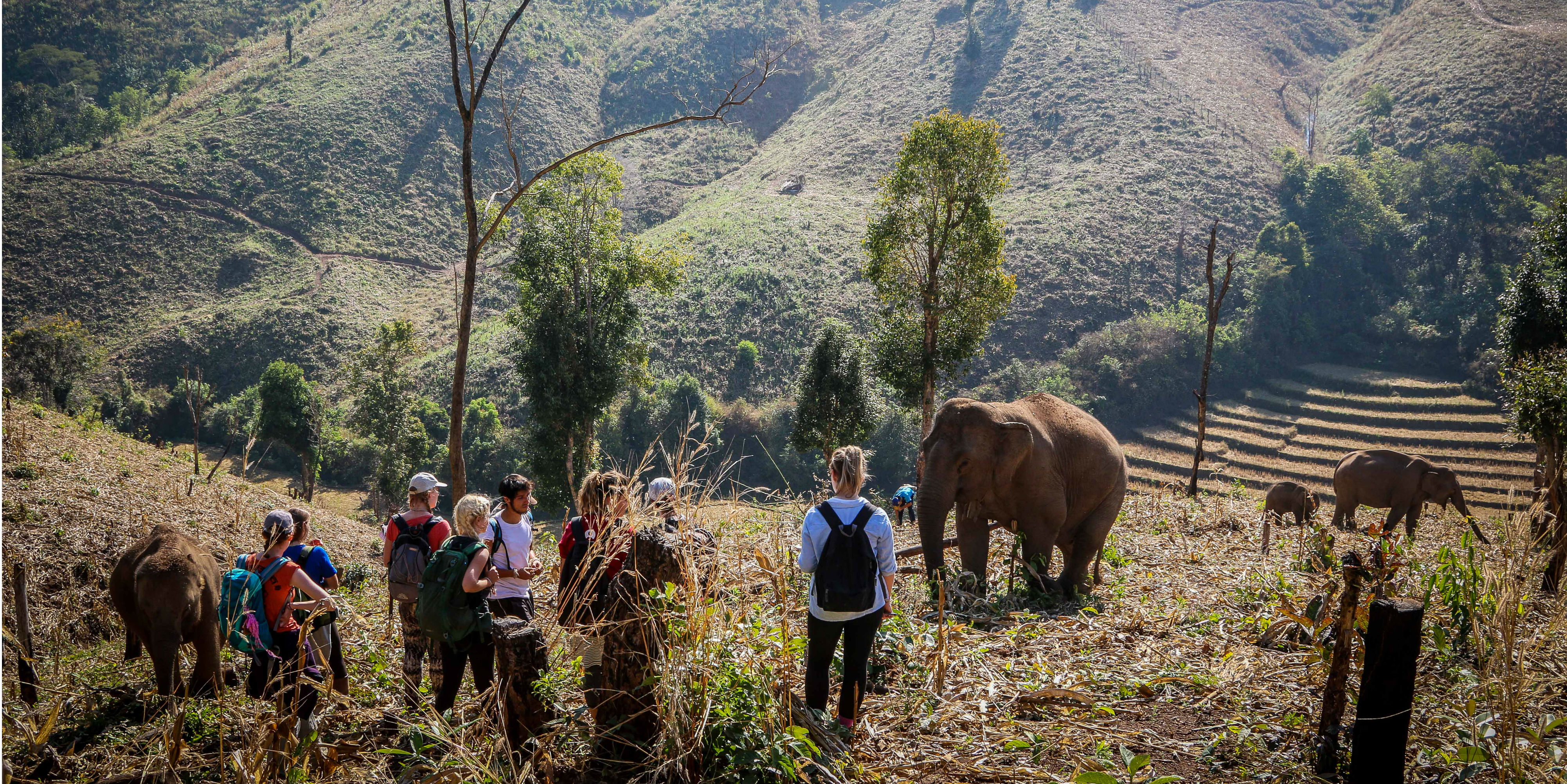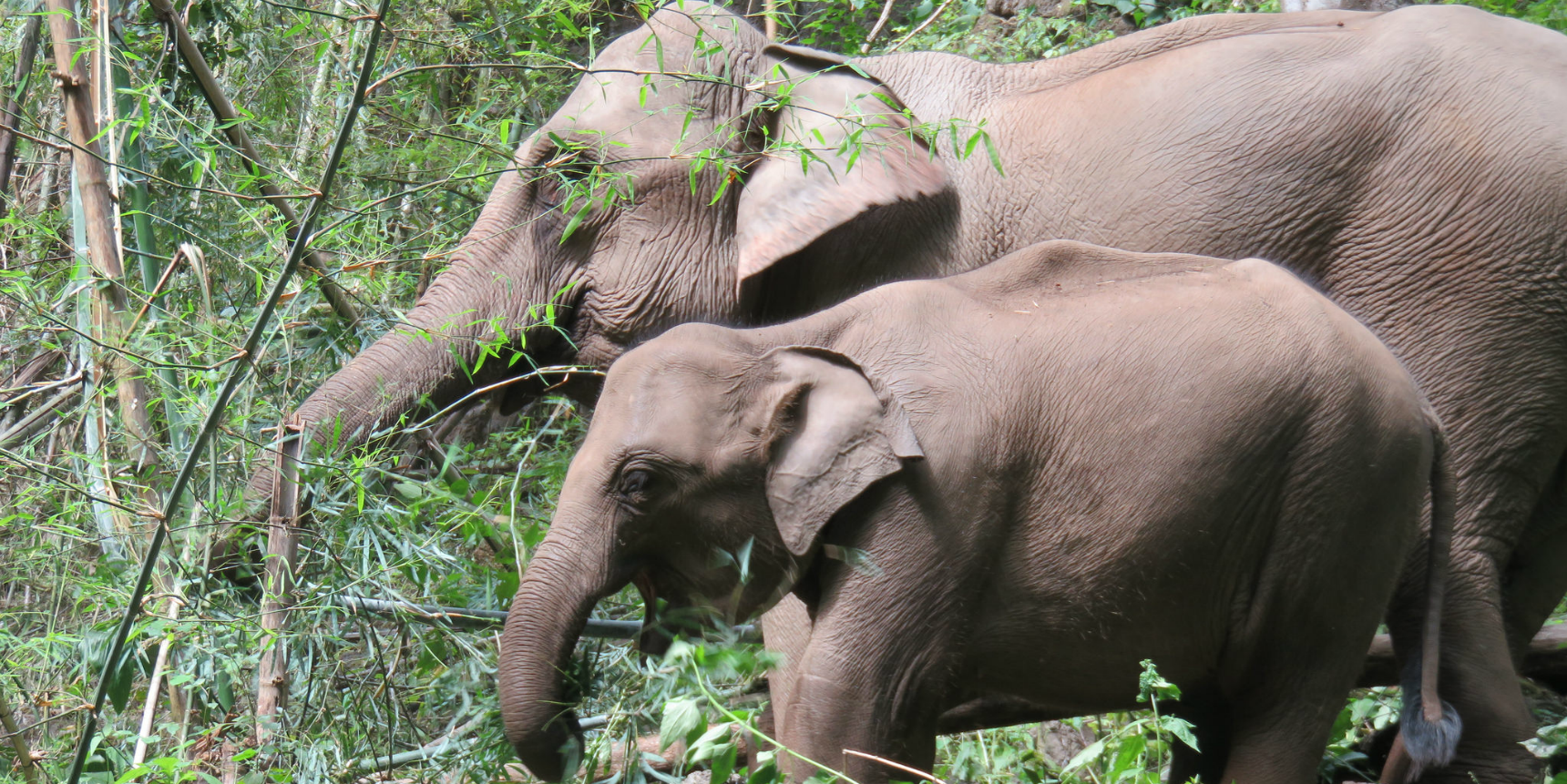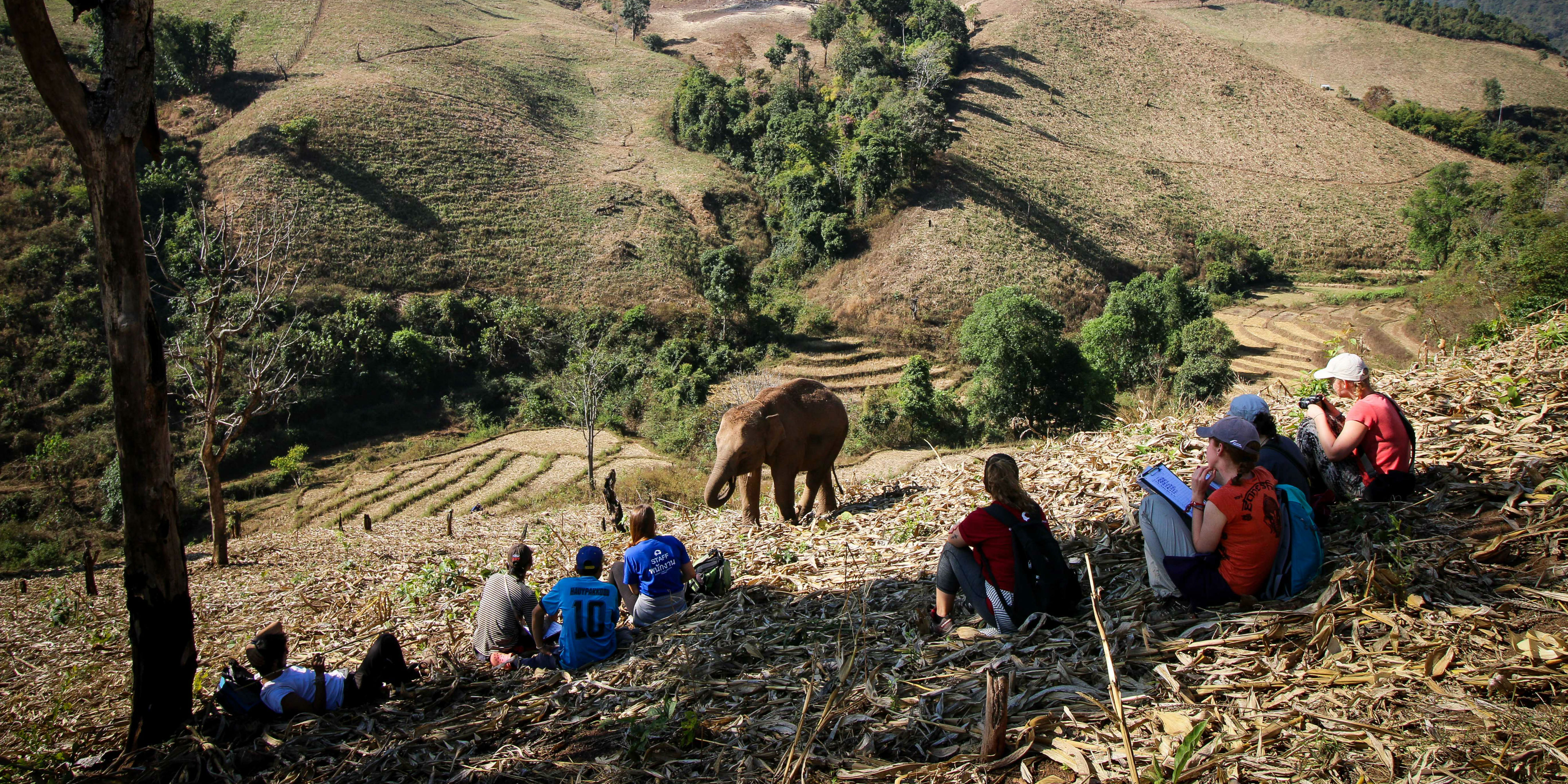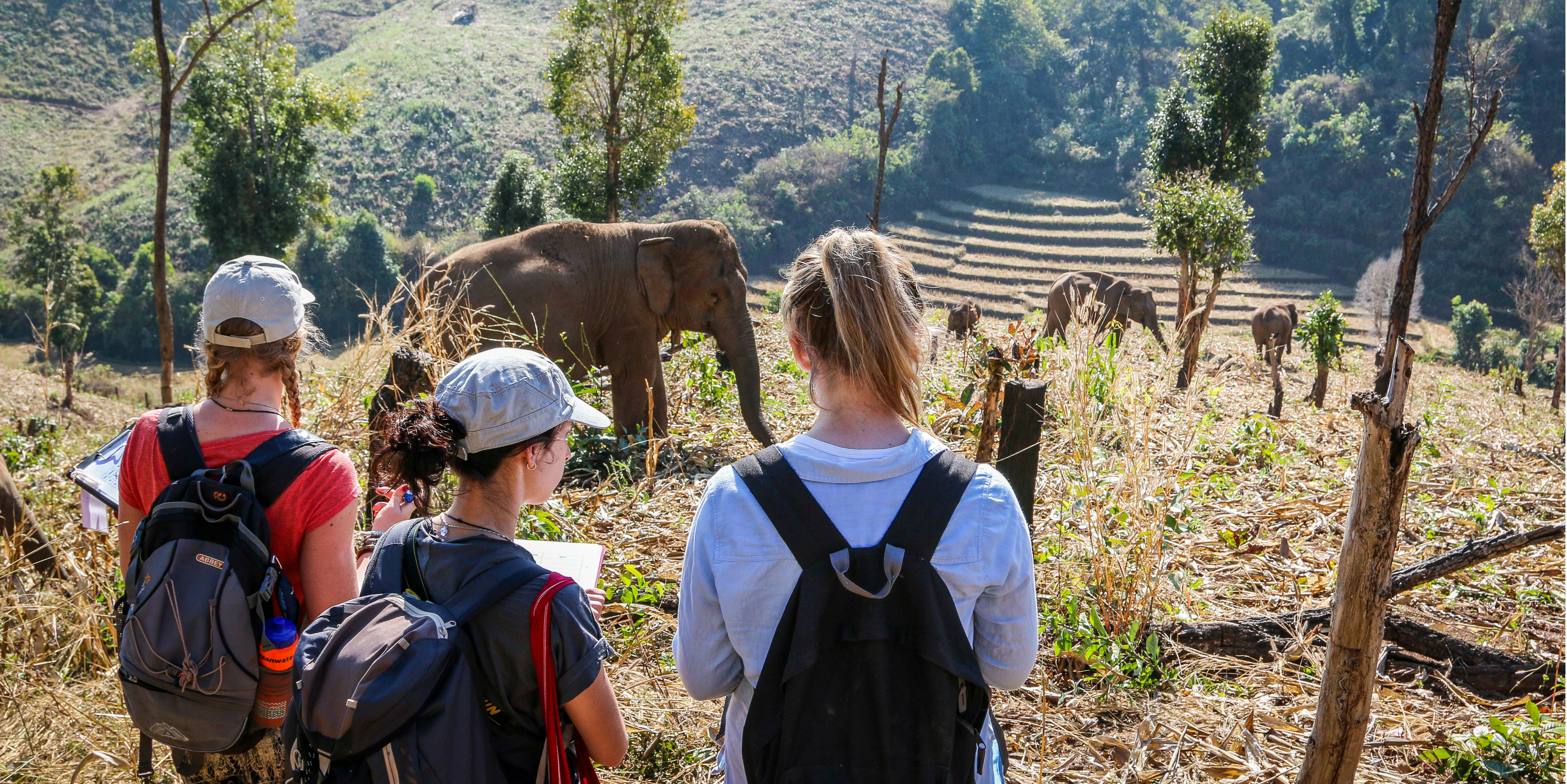Explore the different types of peccaries found in Costa Rica, as well as their importance in the local ecosystem, habitats, behavior, and social structure.
GVI
Posted: May 10, 2023

Zaytoen Domingo
Posted: August 8, 2022
It’s the quintessential Thailand experience: riding, washing or playing with an elephant. Lots of fun for you and your new big friendly giant (BFG) friend – right?
Not quite. Unfortunately, volunteer programs that let you get this close to an elephant are putting the experiences of volunteers above the care and wellbeing of the elephants.
Hidden behind the snaps of smiling tourists and playful elephants, is the exploitation of animals, which is detrimental to local communities.
A number of elephant ‘sanctuaries’ in Thailand offer tourists the opportunity to work with elephants. However, many of these elephant camps do more harm than good.
If you’re looking to volunteer with elephants, your heart is likely in the right place. You just have to make sure you end up in the right place as well.
Let’s take a look at tactics you can use to identify ethical programs, and how GVI is working to promote the welfare of Thailand’s elephants.
It’s important to understand the history of Thailand’s elephants, as well as the context and issues surrounding the animals. This helps to identify ethical elephant programs and understand why these programs need volunteers.
There is a reason you’ll see elephants emblazoned on everything from temples to beer bottles in Thailand. As Thailand’s national animal, they’ve been revered for centuries.
Elephants have traditionally played a large role in Thai art, religion and war. But while elephants were celebrated for their strength and longevity, this fortitude also meant they were put to work in place of machinery in logging and transportation.
A century ago Asian elephants numbered more than 100,000 in Thailand. Now there are only an estimated 3,000–4,000 left.
Human exploitation is to blame for this precipitous drop in numbers. Poaching for ivory or calves, the illegal logging trade, and clearing land for agriculture or development projects have all impacted elephants.
Of the remaining elephants in Thailand, the vast majority are in private ownership and live in captivity. There are roughly 1,000 elephants remaining in the wild. These few wild elephants live in fragmented herds, existing in isolated pockets of forest scattered throughout the country.
Thailand was once 90% forested. But, by the time logging was banned in 1989, 70% of Thailand’s forests had already disappeared. Unfortunately, illegal logging has never stopped and since then the natural habitat of elephants has diminished even further.
The logging trade hasn’t just destroyed elephants’ habitat – it has changed the ways elephants are used. When the logging industry ground to a halt, thousands of elephants were suddenly out of work.
Communities had no alternative source of income, but still needed to care for the elephants, which is incredibly expensive.

As elephants are often seen as a means of generating income, the solution many communities were pushed into was to take their elephants to tourist camps or street begging to profit from tourism.
This, along with the rise in tourist numbers in the last three decades, has resulted in riding elephants in Thailand to become a commonplace tourist experience.
Unfortunately, elephant tourism in Thailand is unregulated and exploitation is common.
Elephants are not domestic animals. The problems of being kept in captivity are compounded by the fact that welfare is not a priority in Thailand’s elephant camps, where the animals lack the physical, social, and mental stimulation they need to thrive.
When deprived of their natural diet, social interactions, and patterns of migration, the mental and physical health of the elephants suffers.
We know that no ethically-minded traveler would want to contribute to these patterns of ill treatment. So, we’ve put together some easy steps for you to follow to uncover the best elephant volunteer programs.
Now you have some background on the ethical problems plaguing elephants in the tourism industry, put your volunteering intentions under the microscope.
Dig a little deeper into your personal motivation to visit elephants in Thailand. This will help guide you toward the right volunteer program, and to understand that programs set up to cater to the whims of tourists aren’t enriching for volunteers, elephants, or the local community.
To get the most out of a volunteer experience, you should have clear goals and a good understanding of your role in the development project. Asking yourself the right questions is a great way to start any volunteer program.
To examine your motivations, ask yourself:

Once you’ve practiced your interrogation skills on yourself, reach out to volunteer organizations and question them directly as well.
Ethical volunteer programs in Thailand should be structured to provide the best possible care for the elephants, as well as their environment.
Conservation of the elephant’s natural habitat is an important aspect of ethical projects, as is providing viable livelihoods for communities that might have no forms of income other than sending elephants and their keepers – called mahouts – to tourist camps.
Ethical volunteer programs are holistic in their approach – and take the elephants, people, and the environment into account.
Some of the questions you can ask organizations include:

Many companies that advertise using the phrase “volunteering with elephants” are not set up to help animals, but to profit off of well-meaning tourists. Separating the ethical from the exploitative generally comes down to what volunteers are tasked with doing.
The main priority of a volunteer program should be the welfare of the elephants. When browsing through the program information and details about volunteer activities, keep an eye out for warning signs that indicate this might not be the case.
Red flags to look out for include:
A lot of close contact with the elephants: Despite essentially being classed as livestock by the Thai government, elephants are wild animals and should be treated as such. That means a minimum of hands-on contact. Ethical volunteer programs will not encourage contact with the elephants more than is strictly necessary.
A lack of training and support: Minimal training and supervision is a hallmark of poorly run programs. Training to provide care for the elephants and support for the program as a whole is an important aspect of ethical volunteer programs.
Learning about elephant behavior will enable you to contribute in a genuine way and understand what is necessary for the elephants’ wellbeing. In the same way, having experienced supervisors on hand is essential, as they can ensure inexperienced volunteers don’t inadvertently threaten the elephants’ health or safety.
Advertising swimming with, riding, or watching elephants perform any unnatural activities such as painting: The activities in any elephant volunteer program in Thailand should be focused on what is best for our big-eared friends, instead of the international volunteers working with them.
That means enabling the elephants to live a life free from performing for tourists. If a volunteer program is promoting bathing elephants in Thailand, consider other options.
No mention of conservation or community work: Protecting Thailand’s elephants is interconnected with protecting for the environment and local communities. Ethical volunteer programs will address these factors as well as elephant care.
Elephants being kept in camps: Elephant care programs that hold the animals’ welfare at heart will strive to make sure they have as much access to their natural habitat as possible.
Deforestation related to agriculture and logging means forests are splintered and scarcely large enough to fully support elephants in the wild.
However, semi-wild herds can still be supported, as in the elephant project in Huay Pakoot. This balance – with elephants free to roam and forage around the village – is much more ethical than confining elephants to camps.
In fact, this particular project ticks all the ethical and elephant-friendly boxes you should be looking out for.

When you volunteer with elephants in Thailand with GVI, you will be helping to reintegrate elephants into their natural environment and support community development.
Our elephant project aims to maintain semi-wild herds of elephants. Conserving their habitat and making sure they are free to roam allows the elephants to live in healthy social groups, watched over by their mahouts.
At the same time, the project provides income for the local village. This means increased job opportunities and a better standard of living for the villagers.
As an ethical volunteer program, this elephant experience in Thailand is also hugely beneficial for individuals who participate.
You’ll receive comprehensive training on elephant care, and the United Nations Sustainable Development Goals (UN SDGs) – to which all GVI programs are aligned – and learn more about how your involvement in the project contributes to advancing these goals.
To find out more, check out the program details or get in touch with us today.
By Zaytoen Domingo
Explore the different types of peccaries found in Costa Rica, as well as their importance in the local ecosystem, habitats, behavior, and social structure.
GVI
Posted: May 10, 2023